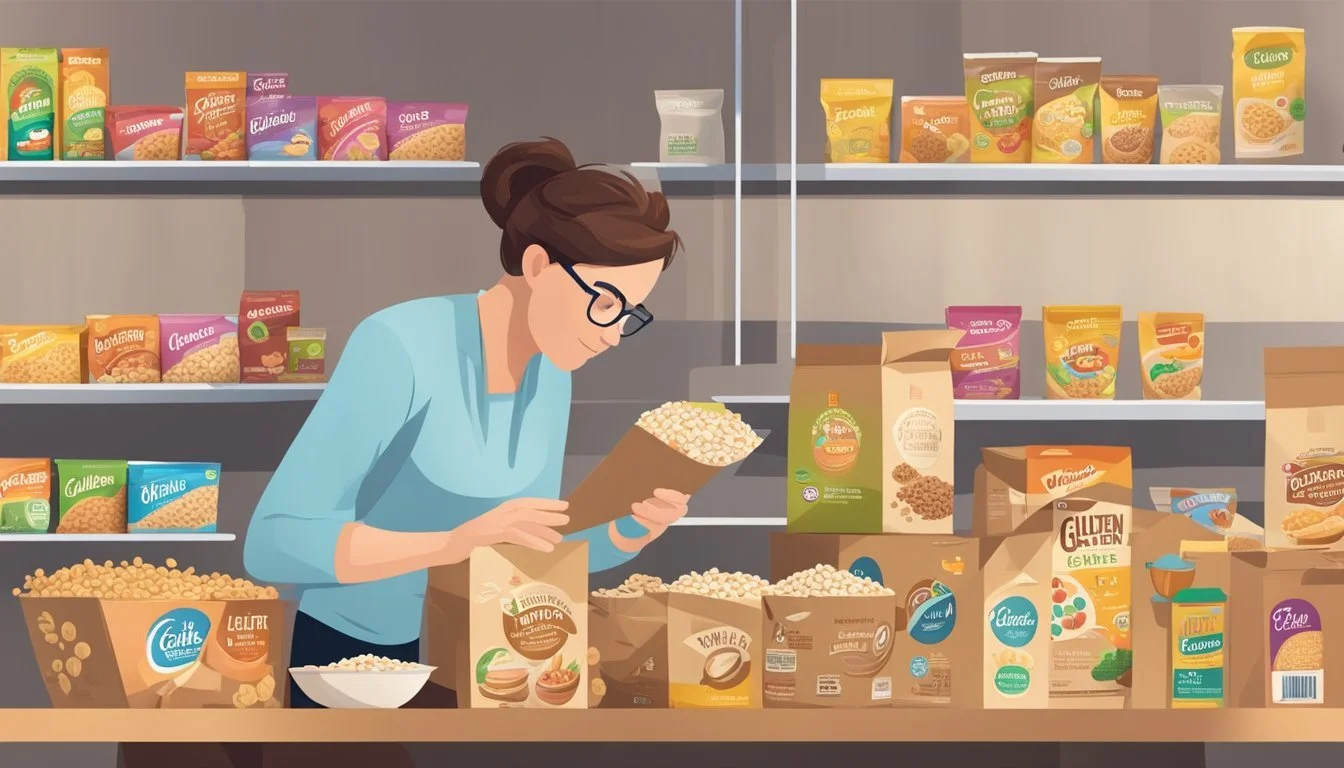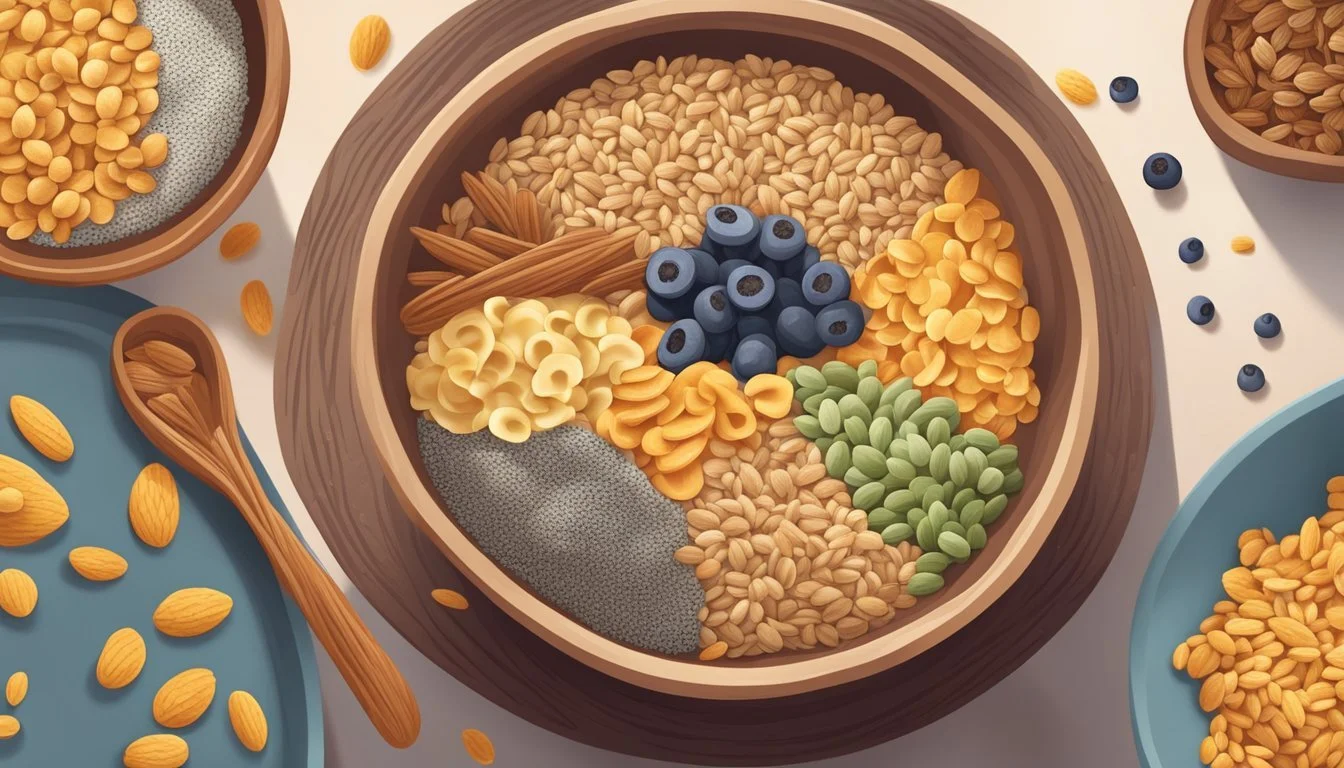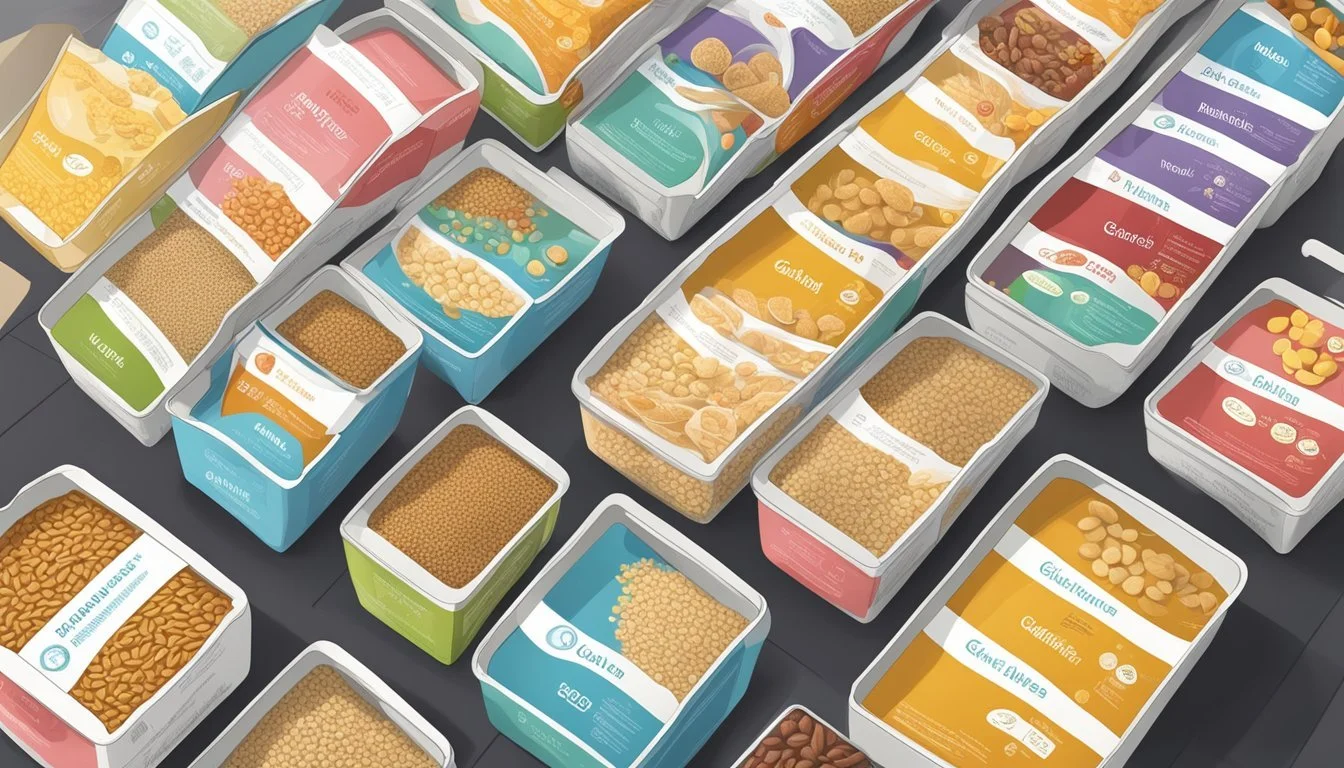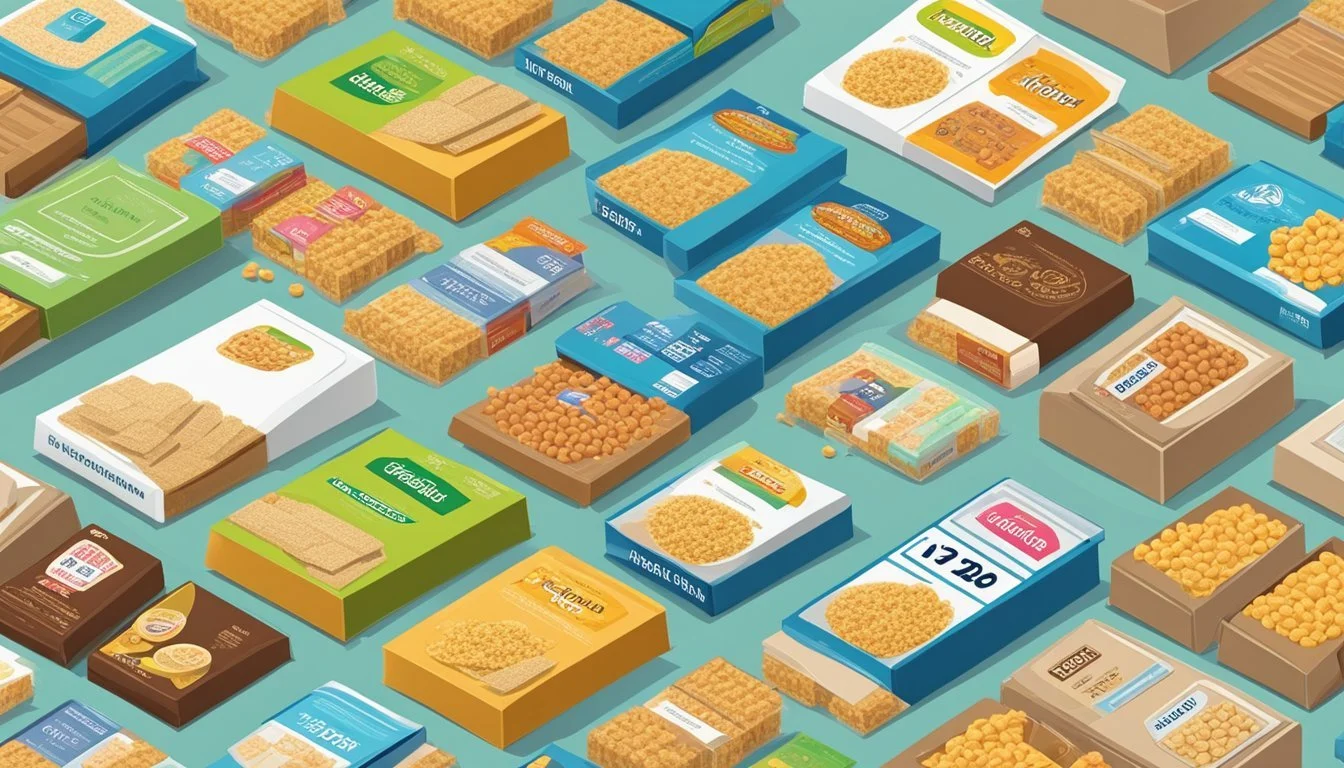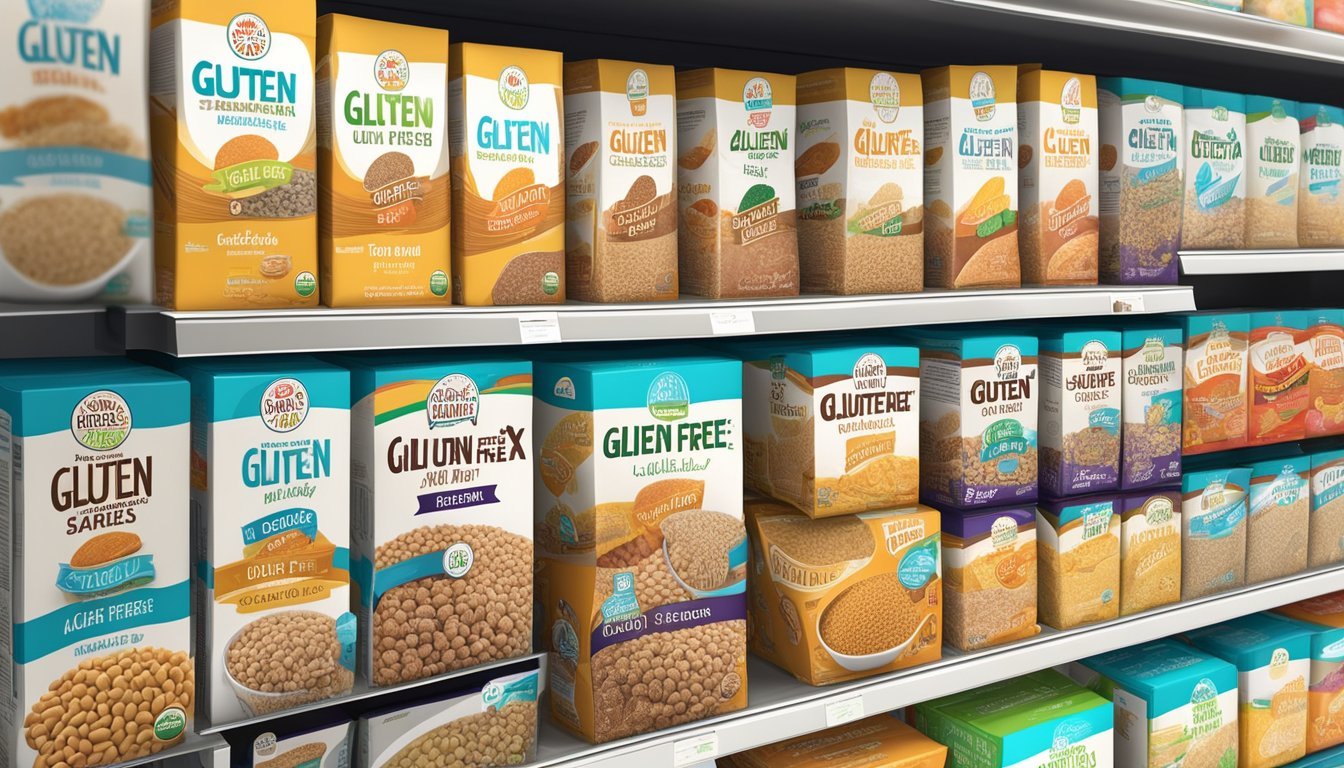Are Cereals Gluten-Free?
Unveiling the Truth About Breakfast Favorites
Determining whether cereals are gluten-free is an important consideration for individuals with celiac disease, gluten intolerance, or those who choose a gluten-free diet for other health reasons. Gluten is a protein found in wheat, barley, and rye, and it can cause adverse reactions in sensitive individuals. While some cereals are inherently gluten-free, others may contain gluten, either due to their ingredients or cross-contamination during production.
The cereal market has evolved to include a wider range of gluten-free options to cater to consumer demand. Most gluten-free cereals are made from corn, rice, or gluten-free oats, and they often avoid the use of wheat, barley, or rye. However, it is essential to read labels carefully, as some cereals may still pose a risk of cross-contamination or may have recently changed their formulations to include gluten-containing ingredients.
Many manufacturers have started labeling their cereal products as 'gluten-free,' providing consumers with more confidence in selecting a safe option. This label indicates that the cereal has met stringent regulatory standards for gluten content. Nevertheless, it's important for consumers to remain vigilant, as recipes and manufacturing processes can change over time, potentially affecting the gluten status of a previously safe cereal.
Understanding Gluten and Celiac Disease
When examining cereals for gluten content, it's essential to understand what gluten is and how it relates to celiac disease and gluten intolerance, as these conditions necessitate strict dietary restrictions.
What Is Gluten?
Gluten is a group of proteins predominantly found in wheat, barley, and rye. In the kitchen, gluten serves a pivotal role by providing elasticity and structure to food. For those without sensitivities, gluten is typically harmless. However, for individuals with certain health conditions, gluten can trigger adverse reactions.
Wheat: Sources include wheatberries, durum, semolina, spelt, and farina.
Barley: Often appears in malt extracts and is used in brewing.
Rye: Commonly used in rye bread and some cereals.
Celiac Disease and Gluten Intolerance
Celiac disease is an autoimmune disorder where the ingestion of gluten leads to damage in the small intestine. Eating gluten, even in minute amounts, can cause symptoms and intestinal harm in those with the disease. Celiac disease requires a strict gluten-free diet for life.
Diagnosis: Confirmed through blood tests and an intestinal biopsy.
Treatment: The only known treatment is a gluten-free diet.
Gluten intolerance, also known as non-celiac gluten sensitivity, causes discomfort after consuming gluten, without the intestinal damage seen in celiac disease.
Symptoms: Can include abdominal pain, bloating, and fatigue.
Management: Often entails a gluten-reduced or gluten-free diet, depending on individual tolerance levels.
Understanding these conditions is paramount for those affected to make informed dietary choices, such as selecting gluten-free cereals.
Identifying Gluten-Free Cereals
Choosing gluten-free cereals hinges on understanding the composition of these cereals and recognizing genuine gluten-free labeling and certification that ensures safety for those with gluten sensitivities.
Components of Gluten-Free Cereals
Gluten-free cereals are composed of grains that naturally do not contain gluten. These grains include corn, rice, quinoa, millet, buckwheat, sorghum, teff, amaranth, and gluten-free oats. It is critical to ensure that oats are labeled gluten-free, as regular oats may suffer from gluten contamination during processing. The ingredient list on cereal packaging provides vital information concerning the presence of gluten-free components and highlights any potential inclusion of gluten-containing grains, such as wheat, barley, or rye.
Gluten-Free Labeling and Certification
Reliable identification of gluten-free cereals comes from proper gluten-free labeling and certification. A product bearing a "Gluten-Free" label signifies adherence to gluten-free standards, typically containing less than 20 parts per million (ppm) of gluten, making them safe for most individuals with gluten intolerance. Certifying organizations, such as the Gluten-Free Certification Organization (GFCO), conduct rigorous testing to certify products, and their seal is a trustworthy indicator of gluten-free integrity. Consumers are encouraged to look for such certifications on cereal packaging for assurance of safety.
Popular Gluten-Free Cereal Brands
When seeking a gluten-free breakfast, consumers have a variety of reputable brands to choose from. These brands offer products that cater to the gluten intolerance needs without compromising on taste.
General Mills and Chex Varieties
General Mills is a leading brand offering several gluten-free cereal options, particularly within their Chex line. Chex cereals come in various flavors, including rice, corn, and cinnamon varieties, all labeled gluten-free. Moreover, Cheerios has become a go-to option for many, as they're made from oats and adhere to gluten-free guidelines.
Corn Flakes: While traditional corn flakes may contain malt flavoring derived from barley, General Mills has worked to provide gluten-free versions.
Cheerios: Also offered in gluten-free varieties, but consumers are advised to check packaging for the gluten-free label to ensure safety.
Purely Elizabeth Products
Purely Elizabeth is a brand recognized for its high-quality gluten-free products. They are known for their gluten-free granolas, including the Purely Elizabeth Ancient Grain Granola. Their cereals and granolas are marketed as non-GMO, organic, and free from artificial preservatives, colors, and flavors.
Purely Elizabeth Gluten-Free Granola: A popular choice that pairs well with milk or yogurt for breakfast or as a crunchy snack.
Other Notable Brands
A diverse selection of other notable brands also offer gluten-free cereals. These include:
Nature's Path: Offers a wide range of gluten-free cereals and granolas.
Barbara's Bakery: Known for Puffins cereal, they provide a selection of gluten-free options.
EnviroKidz: Their line, specifically for children, includes gluten-free cereals like EnviroKidz Panda Puffs.
Lovebird: Caters to gluten-free and paleo diets with cereals free from artificial ingredients.
Fruity and Cocoa Pebbles: These classic cereals are labeled gluten-free and remain favorites among all ages.
Erewhon: Offers gluten-free cereals made with simple, organic ingredients, upholding their reputation for healthy and clean products.
Arrowhead Mills: Includes gluten-free cereals amongst its wide range of products focused on organic ingredients.
Three Wishes: Relatively new to the market, offering a selection of gluten-free and grain-free cereals.
Magic Spoon: Cereal that is gluten-free and boasts high protein, low carb, and no artificial sugars, targeting a health-conscious audience.
Gluten-Free Cereal Ingredients
When exploring gluten-free cereal options, it's crucial to understand the variety of safe grains and substitutes used, as well as the additional ingredients that contribute to nutritional benefits.
Safe Grains and Substitutes
For those avoiding gluten, a variety of grains and substitutes are available that do not contain this protein. Gluten-free cereals typically use grains such as:
Corn: Naturally gluten-free and a common base for many cereals.
Rice: Both white and brown rice are safe grain choices.
Quinoa: A protein-rich alternative that provides all essential amino acids.
Buckwheat: Despite its name, buckwheat is gluten-free and rich in fiber.
Millet: Another gluten-free option that is often used in cereals.
Amaranth: A lesser-known grain that is naturally gluten-free and high in protein.
In addition to single grains, cereals might consist of combinations such as corn-rice blends or multi-grains that exclude wheat, barley, and rye. These grains are not only safe for gluten-intolerant individuals but also offer variety in texture and taste.
Additional Ingredients and Nutritional Benefits
Gluten-free cereals often include additional ingredients to enhance their nutritional profile. These components may include:
Beans: For increased protein content, some cereals integrate bean flours.
Nuts and Seeds: Sources of healthy fats, fiber, and protein, such as flaxseeds or almonds.
Other Grains: Ingredients like teff or sorghum can be included for diversity.
Sugar: Used to sweeten cereals, though the quantity varies by product.
Fiber: Often bolstered through the addition of cellulose or other fiber-rich ingredients.
Protein: Some cereals are fortified with added proteins from various sources.
Vitamins and Minerals: Many cereals are enriched with vitamins such as vitamin D or B12, and minerals like iron and calcium, to meet dietary needs.
Organic and Non-GMO: Certain brands focus on organic or non-GMO ingredients to cater to health-conscious consumers.
By selecting gluten-free cereals that incorporate these additional ingredients, consumers can enjoy a nutritious breakfast or snack that aligns with their dietary restrictions.
Special Considerations for Gluten-Free Diets
When choosing gluten-free cereals, consumers must consider risks of cross-contamination and the impact of gluten-free diets on lifestyle and other dietary choices.
Cross-Contamination Risks
One major concern for individuals on gluten-free diets is cross-contamination. This can occur during the manufacturing process when gluten-free products are made on the same equipment that processes foods containing wheat, barley, or rye. To mitigate this risk, consumers should look for cereals that are certified gluten-free, as these products are subject to rigorous testing. Using a Nima sensor or similar devices can also help individuals test foods for gluten presence on-the-go.
Key Strategies to Avoid Cross-Contamination:
Purchase certified gluten-free cereals.
Use a Nima sensor to test products when unsure.
Read labels for any warnings about shared facility or equipment use.
Lifestyle and Dietary Choices
Gluten-free cereals cater to a variety of lifestyle and dietary choices. Some individuals may also be seeking vegan, paleo, or keto-friendly cereals. Grain-free cereals, which also dovetail with paleo and some keto diet protocols, are naturally gluten-free and typically contain alternative flours like almond or coconut flour.
Considerations for Gluten-Free Cereals Within Specific Diets:
Vegan: Look for cereals without honey or dairy derivatives.
Paleo: Choose cereals that are not only gluten-free but also free from grains, legumes, and dairy.
Keto-Friendly: Select cereals with low net carb content and no added sugars.
Grain-Free: Seek out cereals using nut and seed flours as a base instead of grain flours.
Consumers should carefully evaluate their dietary requirements and choose cereals that align with their needs while maintaining a strict gluten-free diet.
Shopping Tips for Gluten-Free Cereals
When scouring the grocery store aisles for gluten-free breakfast cereals, consumers need to be vigilant about label scrutiny and aware of reliable gluten-free cereal brands.
Reading Labels and Ingredients
One must meticulously read labels and ingredient lists to ensure cereals do not contain gluten. Look for key terms such as "certified gluten-free," which indicates rigorous testing for gluten. Ingredients like malt extract or malt flavoring, typically derived from barley, contain gluten and should be avoided. Additionally, cross-contamination warnings such as "may contain wheat" are red flags for those with celiac disease or gluten sensitivity.
Artificial flavors and colors, as well as preservatives, may also be sources of gluten, so individuals should conduct thorough research to determine their gluten status or reach out to manufacturers when in doubt.
Common Ingredients Containing Gluten to Avoid:
Malt extract
Malt flavoring
Wheat, barley, rye, and derivatives
Any ingredient with "wheat" in its name
Gluten-Free Certification Labels to Look For:
Certified Gluten-Free
Gluten-Free Certification Organization (GFCO)
Gluten-Free Alternatives at the Grocery Store
Several grocery store cereal brands offer gluten-free options. For instance, Chex by General Mills offers a variety of gluten-free flavors, while other brands like Kashi should generally be avoided due to wheat content. Brands like Kellogg's and Udi, amongst others, have begun to diversify their offerings to include gluten-free alternatives that do not compromise on taste and quality.
Consumers should be attentive to updated product labels, as formulations can change over time. For example, Kix cereal, previously free of gluten ingredients, recently updated their packaging with a warning indicating potential wheat contamination.
Trusted Gluten-Free Cereal Brands:
General Mills: Chex
Udi's Gluten Free
Kellogg's: certain offerings
Items to Check Regularly for Updates:
Product formulations
Label warnings
Manufacturing changes
Taste and Texture of Gluten-Free Cereals
Gluten-free cereals often face the challenge of mimicking the satisfying crunch and flavor profiles of their gluten-containing counterparts. This section explores the distinctive taste and texture qualities of gluten-free cereals compared to traditional cereals and discusses current innovations in creating more appealing gluten-free cereal textures.
Comparison with Traditional Cereals
Gluten-free cereals sometimes differ from traditional cereals in both taste and texture. Traditional cereals often have a chewy or hearty texture due to the presence of gluten, which acts as a binding agent. For example, gluten can contribute to the malty, robust flavor in cereals like wheat-based Cinnamon Chex. Contrastingly, gluten-free options may need alternative ingredients to achieve a similar texture. Brown rice crisps cereal tends to have a lighter crunch, while Maple Buckwheat Flakes provide a heartier bite that is closer to the texture of wheat-based flakes. Flavorwise, gluten-free cereals may employ natural sweeteners like fruit juice for Corn Flakes or add bold flavors like berry vanilla puffs to enliven the sensory experience.
Innovations in Gluten-Free Cereal Textures
Manufacturers are becoming more innovative when developing gluten-free cereals, aiming to closely emulate the textures and tastes that consumers expect. They are experimenting with various grains and binding agents to enhance the texture. Chocolate Chex and Vanilla Chex, for example, use rice flour to create a crisp, satisfying texture, which is then enhanced with either cocoa or vanilla flavoring. Blueberry Chex boasts the added dimension of dried fruit pieces for an intermittent chewy texture amidst the crisp squares. Moreover, some gluten-free cereals incorporate grains like quinoa or chia seeds, which can offer both nutritional benefits and an unexpected crunch. Innovators are also exploring the use of sea salt to accentuate the natural flavors of the grains without overpowering them, ensuring the cereals remain appealing to a wide range of palates.
Nutritional Profile of Gluten-Free Cereals
Gluten-free cereals have evolved to match the nutritional offerings of their gluten-containing counterparts, providing essential macronutrients, fiber, and often being fortified with vitamins and minerals to enhance their nutritional benefits.
Macronutrients and Fiber Content
Calories: The caloric content of gluten-free cereals typically aligns with that of traditional cereals, fluctuating based on ingredients. For example, cereals based on maize or rice are often comparable in calories to wheat-based ones.
Protein: Gluten-free cereals can provide substantial protein content, especially pseudocereals like quinoa and amaranth, which offer a complete protein profile with all nine essential amino acids.
Fat: Certain gluten-free cereals contain beneficial fats. Buckwheat, for instance, is rich in omega-3 and omega-6 fatty acids.
Fiber: Many gluten-free cereals, like millet and brown rice, have a high fiber content, which is vital for digestive health.
Fortification with Vitamins and Minerals
Gluten-free cereals are often fortified to enhance their nutritional profile. The table below lists common vitamins and minerals added to gluten-free cereals:
Vitamin/Mineral Purpose Common Cereals Fortified Iron Essential for blood production and oxygen transport. Rice-based, corn-based cereals B Vitamins Include a variety of functions, such as energy production and red blood cell formation. Multigrain blends, pseudocereal-based items Calcium Important for bone health and muscular function. Specialty cereals designed for bone health Vitamin D Supports bone health and immune function. Fortified gluten-free options
Fortification efforts ensure that those on a gluten-free diet can receive nutrients they might miss due to dietary restrictions.
The Financial Aspect of Gluten-Free Cereals
Gluten-free cereals often come with a heightened price tag compared to their gluten-containing counterparts. Financial considerations for consumers include not only the shelf price but also the broader economic implications of producing gluten-free options.
Cost Comparison with Regular Cereals
Gluten-free cereals typically incur higher costs for consumers. A comparison illustrates the differences:
Regular Cereals: Average price of $3 to $5 per box.
Gluten-Free Cereals: Average price of $5 to $7 per box.
Key cost drivers for the increase include specialized production facilities to prevent cross-contamination and the use of more expensive gluten-free grains. Gluten-free cereals often use non-GMO and organic ingredients, which further raises the production costs.
Economic Factors Affecting Pricing
Several economic factors contribute to the higher pricing of gluten-free cereals.
Certification and Labeling: Ensuring that products are genuinely gluten-free involves certification and testing, which adds to the cost.
Ingredients: Gluten-free cereals often substitute with premium ingredients like organic rice or non-GMO corn, which are more costly than traditional wheat, barley, or rye.
Production: Manufacturing processes that strictly avoid cross-contamination with gluten require specialized equipment and facilities.
The demand for gluten-free products continues to grow, yet the economies of scale have not yet reached the level of regular cereals, keeping prices elevated for gluten-free options.
The Future of Gluten-Free Cereal Market
The gluten-free cereal market is poised to evolve with increasing consumer demand for diverse and health-conscious options. Manufacturers are responding with innovative products that cater to various dietary lifestyles.
Trends and Consumer Demands
Consumers increasingly seek out cereals that support their dietary choices, such as paleo, keto-friendly, and grain-free options. Paleo cereals made from nuts and seeds, alongside keto-friendly cereals that are low in carbohydrates and sugar, are gaining traction. Many of these contain sweeteners such as monk fruit, which provide a healthier alternative to traditional sugar-laden cereals. Gluten-free granola is yet another segment experiencing growth, often incorporating nuts, seeds, and sometimes the starchy tuber cassava as a base. These shifts reflect a larger lifestyle trend towards wellness and nutrition.
Innovative Gluten-Free Cereal Products
New gluten-free cereal products are frequently entering the market. Catalina Crunch and Magic Spoon are examples of brands that have innovated within this space, offering flavorful and nutrient-dense alternatives that are gluten-free. These cereals often use unique blends of proteins and fibers to achieve a satisfying texture. Additionally, hot cereal varieties have expanded, catering to those seeking warm, comforting options. These may include gluten-free oats or other gluten-free grains that are suitable for a hot porridge-like meal. Innovations continue in formulations that exclude traditional grains altogether, favoring ingredients like almond flour or coconut flour for a grain-free cereal experience.



